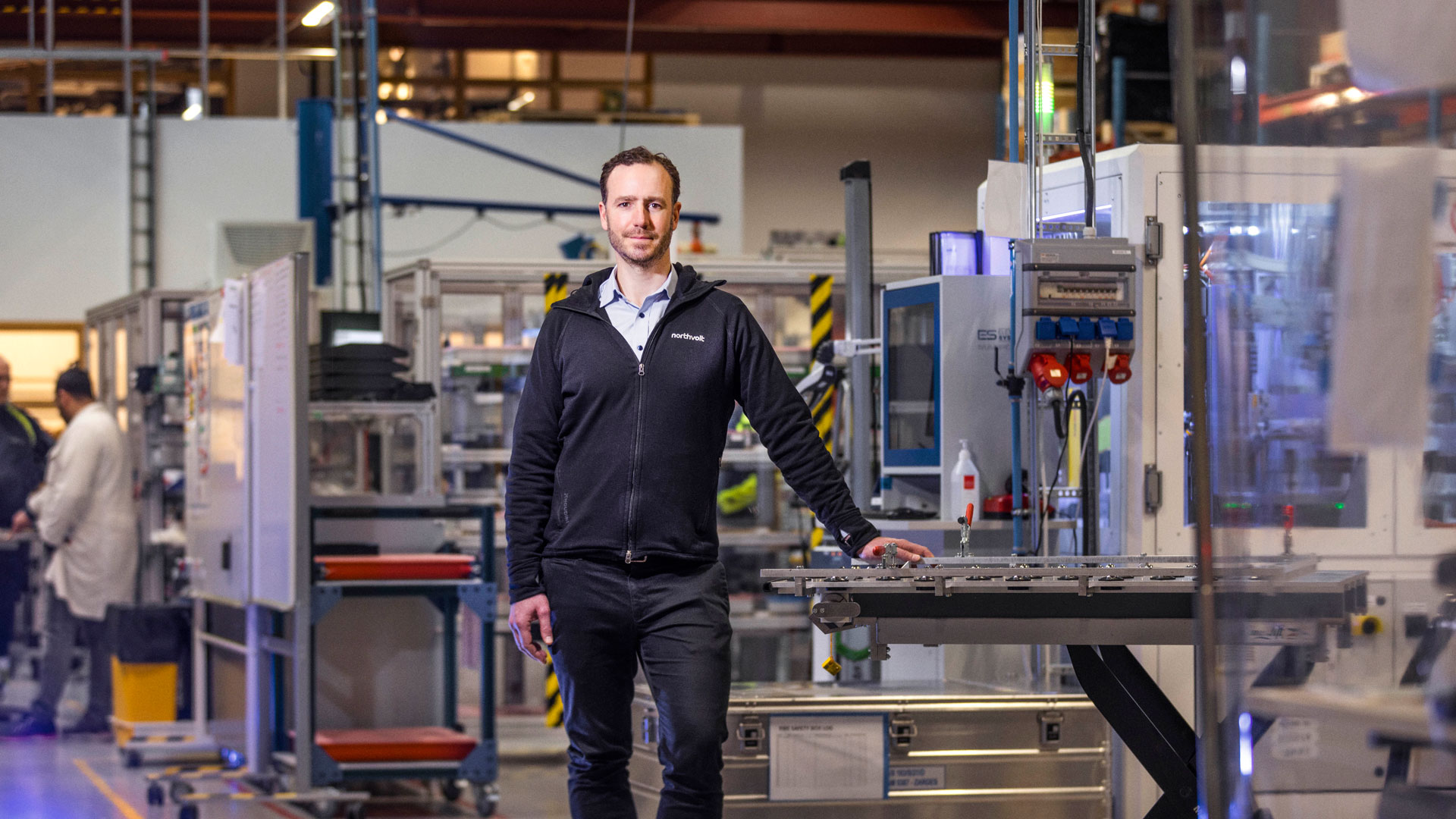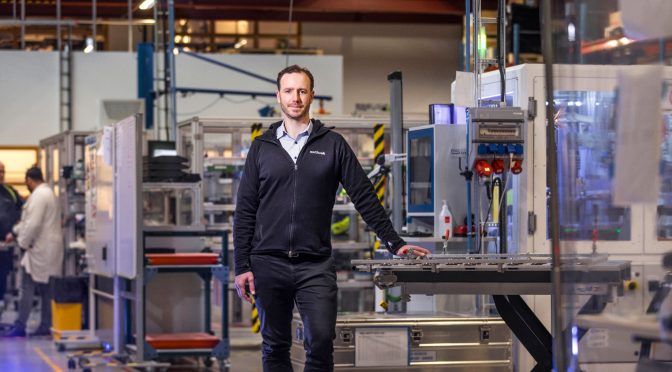Batteries have a key role in the sustainable energy transition. But for batteries to be truly sustainable, there are several important aspects to consider, explains Wilhelm Löwenhielm, Head of Battery Energy Storage Systems at Swedish battery developer and manufacturer Northvolt.

NewsTechnology and development29 March 20234 min
Northvolt: “Don’t fight carbon with carbon in the energy transition”
Batteries have a key role in the sustainable energy transition. But for batteries to be truly sustainable, there are several important aspects to consider, explains Wilhelm Löwenhielm, Head of Battery Energy Storage Systems at Swedish battery developer and manufacturer Northvolt.
By Vattenfall Media Relations
- Copy url https://group.vattenfall.com/press-and-media/newsroom/2023/northvolt-dont-fight-carbon-with-carbon-in-the-energy-transition

As Europe transitions towards a low-carbon economy, energy storage systems (ESS) become key enablers of renewable energy integration. Energy storage systems allow for the management of intermittent energy supply and demand, ensuring that electricity generated from renewable sources can be stored and dispatched when needed. The global ESS installed capacity by 2030 is forecasted to be 15 times greater than today. However, the environmental impact of ESS extends beyond their operational life, and the procurement of batteries for these systems should consider the full lifecycle impact in terms of carbon emissions and other negative externalities.
Although there are little direct carbon emissions occurring during the operation of battery operation, significant amounts of direct and indirect carbon emissions are released in the processes along the entire battery value chain, from extraction of raw materials to end-of-life disposal. Thus, it is essential to take lifecycle emissions into account when procuring batteries for ESS to ensure that the system’s environmental benefits are maximised. It is not ideal to use products with a heavy carbon footprint from one end of the world to enable a low-carbon economy in Europe.
Battery manufacture and transport key emission drivers
The production of batteries involves the extraction and processing of raw materials such as lithium, cobalt, and nickel, and the manufacturing of battery cells. For average batteries in the market, these activities typically contribute to 65-85 per cent of their total lifecycle emissions, studies show. Mining and refining activities emit substantial amount of carbon. The battery manufacturing process is energy-intensive and contributes to large emissions if powered with carbon-intensive energy. In addition, it must be taken into consideration that the raw materials are often mined in developing countries, where the standards for labour and environmental conditions are generally lower. This can lead to deforestation, land degradation, water pollution, and displacement of local communities.
Transportation and logistics also play a role in the carbon footprint of batteries. The emissions associated with transportation and logistics of average batteries in the market account for approximately 5 per cent of a battery’s total lifecycle emissions. The production of batteries typically takes place in one part of the world, while the demand for batteries occurs in another. The transportation of batteries across long distances, often via air or sea, can result in significant emissions.
Managing the end of life for batteries
End-of-life treatment, another critical aspect, can account for 10-30 per cent of a battery’s total emissions. Batteries contain toxic and hazardous materials that can pollute the environment if not treated correctly. Recycling is the preferred path for end-of-life treatment of batteries as it allows for the recovery of valuable materials and reduces dependency on virgin materials. However, the energy-intensive recycling processes will contribute to further emissions if powered with carbon-intensive energy. Recycling will add the most value when the waste batteries contain high content valuable materials, such as lithium, nickel, and cobalt.
Considering lifecycle emissions when procuring batteries for ESS can help identify environmentally friendly suppliers. Suppliers that prioritise sustainable sourcing of raw materials and low-carbon manufacturing facilities, minimise transportation and logistics emissions, and have a robust end-of-life management plan can significantly reduce the environmental impact of batteries. By choosing environmentally responsible suppliers, ESS users can also help drive demand for sustainable practices in the battery industry.
In addition to scrutinising lifecycle emissions, the procurement of batteries for energy storage systems should also consider other aspects of environmental, social, and corporate governance (ESG). One critical aspect of ESG in the battery industry is traceability, which refers to the ability to track the origin and movement of materials throughout the value chain. Traceability is essential for identifying and addressing potential social and environmental risks associated with the production of batteries.
The world’s greenest batteries
At Northvolt, we take pride in our mission to build the world’s greenest batteries for electric vehicles, commercial vehicles, off-highway vehicles, as well as for energy storage systems. The source of every part of our batteries – from raw materials and third-party components to power for our factories – has been carefully assessed and selected from a carbon intensity and ESG point of view. By 2030, our target is to reach a carbon content level in our batteries of 10 per cent relative to today’s leading battery suppliers. And we are already well under way to reach this goal.
In conclusion, procuring batteries for energy storage systems involves more than just assessing the battery’s technical specifications and cost. The environmental impacts of batteries extend beyond their operational life and should consider the full lifecycle emissions. Addressing this top
ic requires collaboration and transparency along the value chain, from raw material extraction to end-of-life disposal. By considering the full lifecycle of batteries, users can ensure that their energy storage solutions truly contribute to a sustainable low-carbon future.
Guide for sustainable procurement of energy storage systems, ESS:
- Assess the full lifecycle greenhouse gas emission footprint of the batteries – not only what emissions they reduce during the operational phase
- Require full traceability of the battery system’s components and raw materials, and carefully assess the value chain in terms of environmental, social, and corporate governance.
- Ensure compliance of batteries with current and planned EU and local regulation in terms of recycled content, carbon footprint, and other environmental, social, and corporate governance standards


